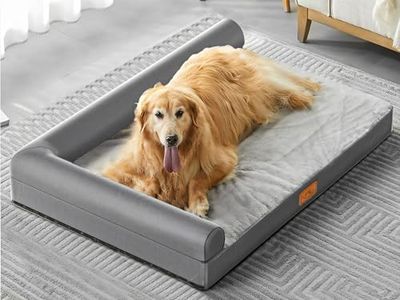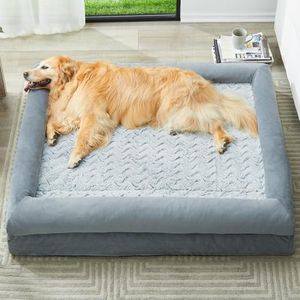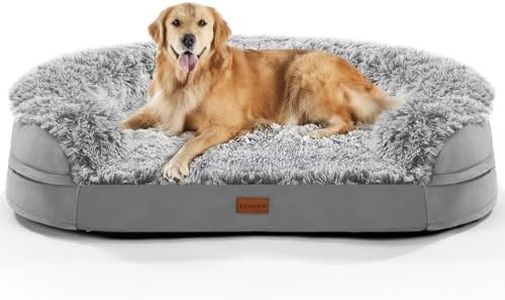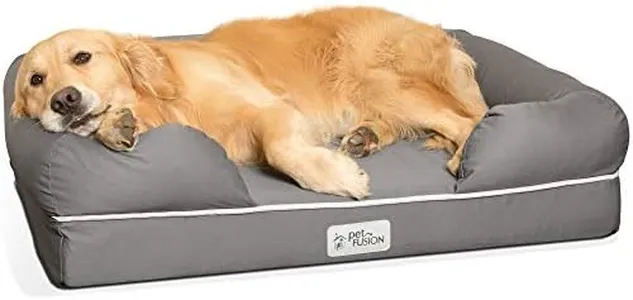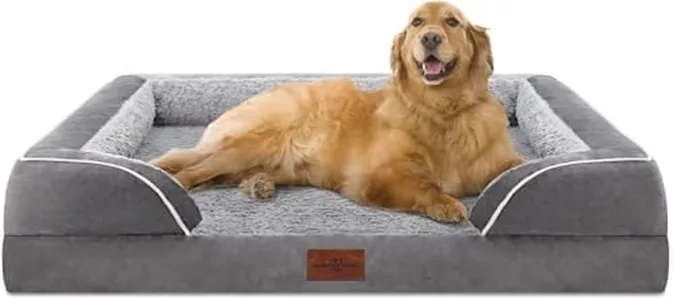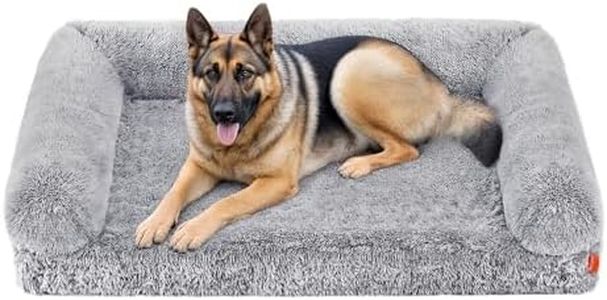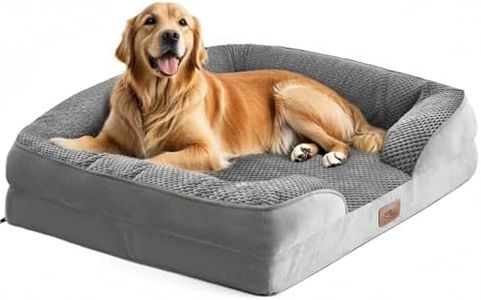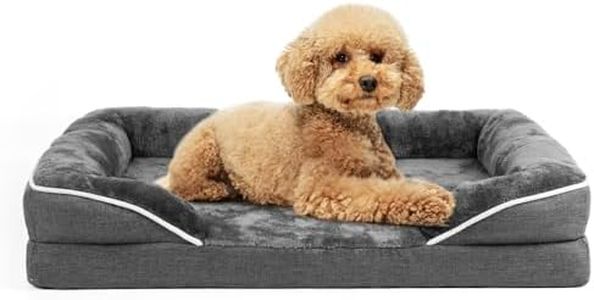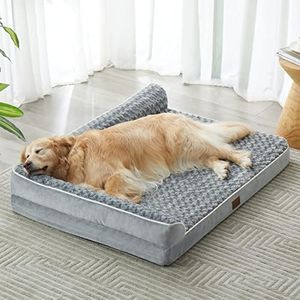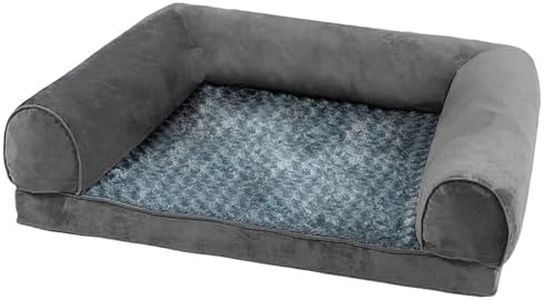We Use CookiesWe use cookies to enhance the security, performance,
functionality and for analytical and promotional activities. By continuing to browse this site you
are agreeing to our privacy policy
10 Best Dog Beds For Senior Dogs
From leading brands and best sellers available on the web.Buying Guide for the Best Dog Beds For Senior Dogs
Choosing the right dog bed for a senior dog is all about comfort and support. Senior dogs often have joint pain, arthritis, or mobility issues, so their bed should provide extra cushioning, be easy for them to get in and out of, and offer supportive materials that can help with aches and pains. Think about your dog's specific habits, health concerns, and favorite sleeping positions. Also, consider maintenance—an older dog might have occasional accidents, so easy cleaning can be important.Orthopedic SupportOrthopedic support refers to the bed's ability to provide even, cushioning comfort, usually thanks to memory foam or similar materials. This type of support helps relieve pressure on sore joints and muscles, which is very important for older dogs with arthritis or hip dysplasia. Beds can range from thin foam pads to thick orthopedic mattresses. If your dog shows signs of pain or mobility issues, look for a bed with firm, thick orthopedic foam rather than just soft stuffing for maximum support.
Bed Height and AccessibilityThe height of the dog bed impacts how easily an older dog can get on and off it. Lower beds are best for senior dogs as they reduce the need for jumping or climbing. Elevated beds might be comfortable, but they can be challenging if your dog struggles with movement. If your dog has very limited mobility, a flat, low-profile bed without high sides will make access much easier.
WashabilityWashability refers to how easily you can clean the bed. Older dogs can sometimes have accidents or shed more, so a bed with a removable, machine-washable cover is highly recommended. Some beds have waterproof liners for added protection, making clean-ups easier. If your dog is prone to accidents, prioritize beds that can be cleaned regularly without losing their shape or comfort.
Material and FabricThe fabric used on a bed affects both comfort and durability. Soft, plush materials can be cozy for a dog, but they should also be durable enough to withstand frequent use and washing. Some materials are cooler or warmer, so consider your dog's needs—choose a breathable cover if your dog tends to overheat, or a warmer one if they chill easily. Sensitive skin or allergies may also influence your fabric choice.
Bed Size and Sleeping PositionGetting the right size bed ensures your dog can stretch out fully and maintain their favorite sleeping position, whether curled up or sprawled out. A cramped bed can worsen discomfort in senior dogs. Measure your dog from nose to tail and add a few extra inches for comfort. If your dog likes to rest their head, beds with bolstered sides are helpful; if not, a flat, open mattress might be best.
Non-Slip BottomA non-slip bottom helps keep the bed in place, especially for senior dogs that may not be as steady on their feet. This reduces the risk of the bed sliding when your dog climbs in or out, which can prevent falls or injuries. If your home has smooth floors, a bed with a non-slip base is particularly important for safety.
